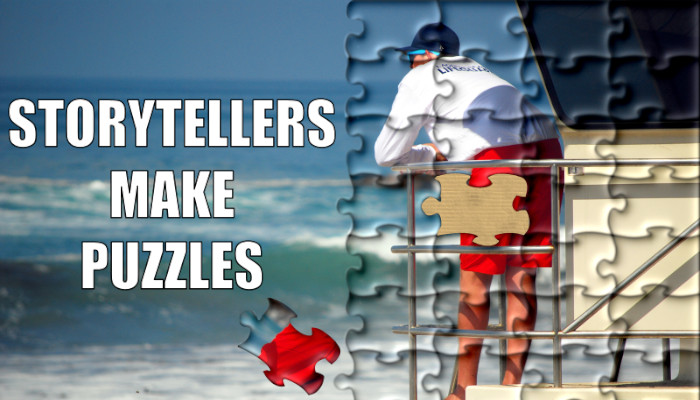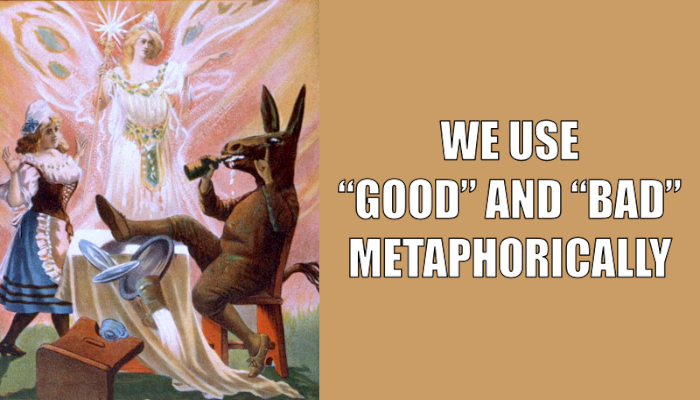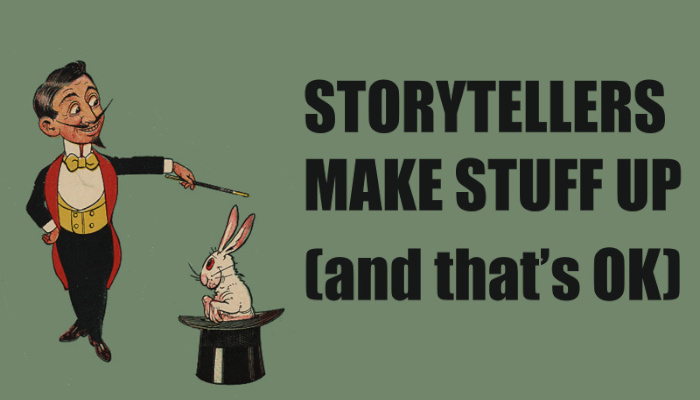by Ron Ploof | Aug 9, 2020 | Business Storytelling, Metaphor

The third in a series on metaphor
Jessica and Rob, cast members of the reality television series Below Deck Mediterranean, are attracted to one another. As they get closer, we learn something that Jessica doesn’t know–that Rob is in an open relationship with his girlfriend back home. When another cast member decides to drop that bombshell into a group conversation, we see Jess’s physical expression change dramatically as she retreats into her thoughts.
Rob notices and asks, “What puzzle are you trying to put together?”
I grabbed the remote control, hit the pause button, and repeated the question out loud. “What puzzle are you trying to put together?” I loved this question because it reveals the storyteller’s role–to create puzzles for their audiences to solve.
Storytelling works because it mimics our never ending cycle of rectifying new knowledge with our prior knowledge. When we see, hear, feel, taste or touch something that defies our understanding, we become fixated and thus mentally paralyzed. Just as Jessica turned inward to rectify her feelings for Rob with this new information, dichotomies force our minds into overdrive–shutting out the rest of the world until we can square up the two competing thoughts.
Good storytellers create puzzles to hold people’s attention. Great storytellers balance the difficulty of solving those puzzles–too easy bores an audience, while too difficult makes them give up.
Which brings us to the focus of this series. If storytellers create puzzles that our brains are programmed to solve, then metaphors are super puzzle pieces that fill the gap between prior knowledge and new knowledge. While “Meghan is a rock” may at first blush seem like a puzzle, it resolves itself quickly as our brains transfer the properties of rocks to define her personality.
If stories are puzzles, metaphors are the super pieces.
by Ron Ploof | Jul 26, 2020 | Metaphor

The second post in a series on metaphor
Last post, we described how humans use metaphor to transfer the properties of one thing to another. Today we discuss the value-judgments that we make with respect to those properties.
Metaphor works because we all share one thing: the human condition. George Lakoff and Mark Johnson explain how.
“We are physical beings, bounded and set off from the rest of the world by the surface of our skins, and experience the rest of the world as outside us. Each of us is a container, with a bounding surface and an in-out orientation onto other physical objects that are bounded by their surfaces. Thus, we also view them as containers with an inside and an outside.”1
Humans are autonomous beings who wonder through the world collecting experiences as we interact with physical phenomena. We learn that the sun comes up every morning and sets every night. We go to bed at night and wake up in the morning. When we get out of bed, gravity holds our feet to the ground and the friction between our feet and the floor allows us to propel forward rather than slipping and falling. We breathe in a mixture of nitrogen and oxygen and expel carbon dioxide. When we touch a hot stove we pull away quickly, yet when we experience the embrace of a warm hug, we pull closer.
We rely on our five senses to navigate through this world through our senses of sight, sound, taste, touch, smell. All rely on measuring differences–in light (sight); sound pressure (hearing), flavor (taste), hardness, texture, temperature, weight (touch), and fragrances (smell). Because our senses are built upon determining differences, we make value-judgments and categorize some as pleasant (good) and others as unpleasant (bad).
Sight: We need light to see, thus more light is perceived as better than less light. Since we prefer brightly lit objects to dimly lit ones, we categorize the former as good and the latter as bad. For example, take a look at the following metaphoric properties based on the sense of sight.
- Bright hope
- Dim despair
- Sharp argument
- Fuzzy logic
Sound: Our ears discern differences in sound pressures–the larger difference, the louder the sound. Since loud sounds startle while soft sounds soothe, we associate loud with bad and soft with good. But, there’s some additional subtlety here because not all soft sounds are pleasant. Certain musical notes played simultaneously clash, while others form beautiful harmonies. Consider the following metaphoric properties based on the sense of hearing.
- Soft-spoken words
- Loud-mouthed diatribe
- Harmonious voices
- Discordant views
Touch: Our sense of touch helps determine differences in texture, hardness, temperature, and weight. We associate those that bring pleasure as good (smooth, soft, warm, light), and those that don’t (jagged, solid, hot/cold, heavy) as bad.
- Rough patch
- Smooth sailing
- Hard edge
- Soft landing
- Warm hands
- Cold heart
- Heavy response
- Light touch
Taste: Our sense of taste helps us discern five different flavors: sweet, sour, bitter, salty, and savory. We consider some to be more pleasurable (good) than others (bad), like:
- Sweet melody
- Sour note
- Bitter defeat
- Salty language
- Savory victory
Smell: Our noses can discern trillions of different scents–some that we enjoy (good) and others that we don’t (bad), as in:
- Fishy concept
- Sniff test
- Love stinks (yeah, yeah)
We’re autonomous beings, wandering through the same physical environment with the help of our five senses. We associate properties with the things that we encounter and simultaneously attach the concept of good and bad to them. Finally, we convey new meaning to other autonomous beings by transferring these properties and value judgments through metaphor.
Notes:
Photo Credit: U.S. Lithograph Co, and Chas. H Yale. Chas. H. Yale’s everlasting Devil’s auction. , ca. 1904. Cincinnati ; New York: U.S. Lithograph Co. Photograph. https://www.loc.gov/item/2014635390/.
1. George Lakoff and Mark Johnson, Metaphors We Live By (University of Chicago Press, 2003) Kindle e-book location 521/4362
by Ron Ploof | May 24, 2020 | Business Storytelling

Storytelling works because our brains are in a perpetual state of assessing whether or not something makes sense to us. If we see, hear, touch, taste, or smell something that defies our expectations, our brains churn until we somehow rectify the differences. The good news is that humans have an uncanny ability to fill this meaning-gap. The bad news is that they can fill it with ANYTHING–from pure logic to pure lunacy–because the meaning-gap is a breeding ground for things like superstitions and old wive’s tales.
Great storytellers anticipate and fill potential meaning-gaps before they form. For example, the movie Men in Black is based on a premise that aliens from outer space have not only been living among us secretly, but they’ve also been policed by a top-secret government organization. While this is a great premise to build a movie upon, it carries a potential flaw. Would an audience willingly believe that this huge secret could be kept from the public? To address this potential distraction, the script writers had to make something up.
Enter the memory eraser. With the ability to erase people’s memories, the government could then selectively remove an alien encounter from someone’s mind. Even though memory erasers don’t exist in real life, audiences were willing to suspend their beliefs for the duration of the movie.
But making stuff up isn’t limited to fiction. Storytellers in nonfiction communities like math and science make stuff up all the time. Consider the mathematical concept of the square root. To find the square root of 4, we ask ourselves, “What number, multiplied by itself, is 4?” The answer of course is 2, just as the square root of 9 is 3; square root of 16 is 4, and the square root of 10 is 3.162278…
So, what’s the square root of negative 4? Wait. That’s impossible, right? Didn’t we learn in grade school that a negative times a negative is ALWAYS a positive? Well. yes and no. Although it’s hard to wrap one’s brain around the situation occurring in the physical world, some mathematical equations require us to calculate square roots of negative numbers.
So, how did the mathematicians rectify the logical inconsistency? They not only made something up, but didn’t even try to hide the fact by calling the fictional device an “imaginary number.” No joke. They invented the number “i,” which when multiplied by itself is negative one (-1). Therefore, if you’re ever asked, the square root if negative 4 is “2i.”
“C’mon, Ron,” you might be saying, “That’s nonsense. They just made something up that has no bearing in the real world.”
Think so? Without imaginary numbers, communications engineers could have never designed things like cellular telephone networks.
Do you have a complicated concept to convey–one that may create more confusion than clarity? If so, consider making something up, like a memory eraser or an imaginary number. What device can you invent that conveys meaning while simultaneously filling a potential meaning-gap?
Photo Credit: Bunny, Rupert, Artist. Vaudvilles and other things by Bunny. , None. [New york: isaac h. blanchard co., between 1900 and 1910] Photograph. https://www.loc.gov/item/2014647846/.


